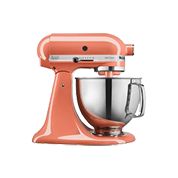Using AquaLift Oven Cleaning Cycle - Electric Range
AquaLift Oven Cleaning Performance
AquaLift® Self-Cleaning:
CLICK HERE for a video about AquaLift® Self-Cleaning Technology.
NOTE: Allow the oven to cool to room temperature before using the Clean cycle. If your oven cavity is above 200°F (93°C), “Oven Cooling” will appear in the display, and the Clean cycle will not be activated until the oven cavity cools down.
To Clean:
- Remove all racks and accessories from the oven cavity and wipe excess soil. Use a plastic scraper to remove easily removed soils.
- Pour 2 cups (16 oz [500 mL]) of distilled or filtered water onto the bottom of the empty oven and close the oven door.
IMPORTANT: Do not use chemicals or other additives in the water. Do not open the oven door during the Clean cycle. The water on the oven's bottom is hot.
- Press AQUALIFT SELF CLEAN and then START on the oven control panel.
- Allow 40 minutes for cleaning and cool down. A beep will sound when the Clean cycle is complete.
- Press CANCEL at the end of the cycle. Cancel may be pressed at any time to stop the Clean cycle.
- Remove the residual water and loosen the soil with a sponge or cloth immediately after the Clean cycle is complete. After the cycle is completed, much of the initial 1¾ cups (14 oz [414 mL]) of water will remain in the oven. If additional soils remain, leave a small amount of water in the oven bottom to assist with the cleaning.
- If any soils remain, remove them with a non-scratch scrubbing sponge or plastic scraper. Additional Clean cycles may be run to help remove the stubborn soils.
IMPORTANT: Do not use oven cleaners. The use of chemicals, including commercial oven cleaners or metal scouring pads, may cause permanent damage to the porcelain surface of the oven interior.
Tips and Suggestions
- The range should be level to ensure that the entire surface of the bottom of the oven cavity is covered by water at the beginning of the Clean cycle.
- For best results, use distilled or filtered water. Tap water may leave mineral deposits on the oven bottom.
- Before removing the residual water and loosened soils at the end of the Clean cycle, insert a cloth or paper towel between the lower edge of the oven door and the front frame to keep water from spilling onto the front of the range and the floor.
- Soil baked on through several cooking cycles will be more challenging to remove with the Clean cycle.
- Nonabrasive scrub sponges or eraser-style cleaning pads (without cleaners) can be useful for cleaning the oven cavity walls, oven door, and oven bottom for difficult soils. For best results, moisten the pads and sponges before use.
Run an additional Clean cycle for stubborn soils.
affresh® Cooktop Cleaner may be used to clean the oven bottom, walls, and door when the oven has finished the cycle and returned to room temperature. If the affresh® Cooktop Cleaner is used, it is recommended to wipe out the cavity with distilled water as well.
For assistance with AquaLift® Technology, call 1-877-258-0808 in the U.S.A. or 1-800-807-6777 in Canada.
Still need help? Contact us or schedule service.
Please contact us or click below to make an appointment from our preferred list of service providers for service on your appliances.
United States
Canada
Interested in purchasing an Extended Service Plan?
Please click below to learn more on how you can save up to 25% on New Appliance Extended Service Plans within 30 days of your appliance purchase.
United States
Canada










.png)

























